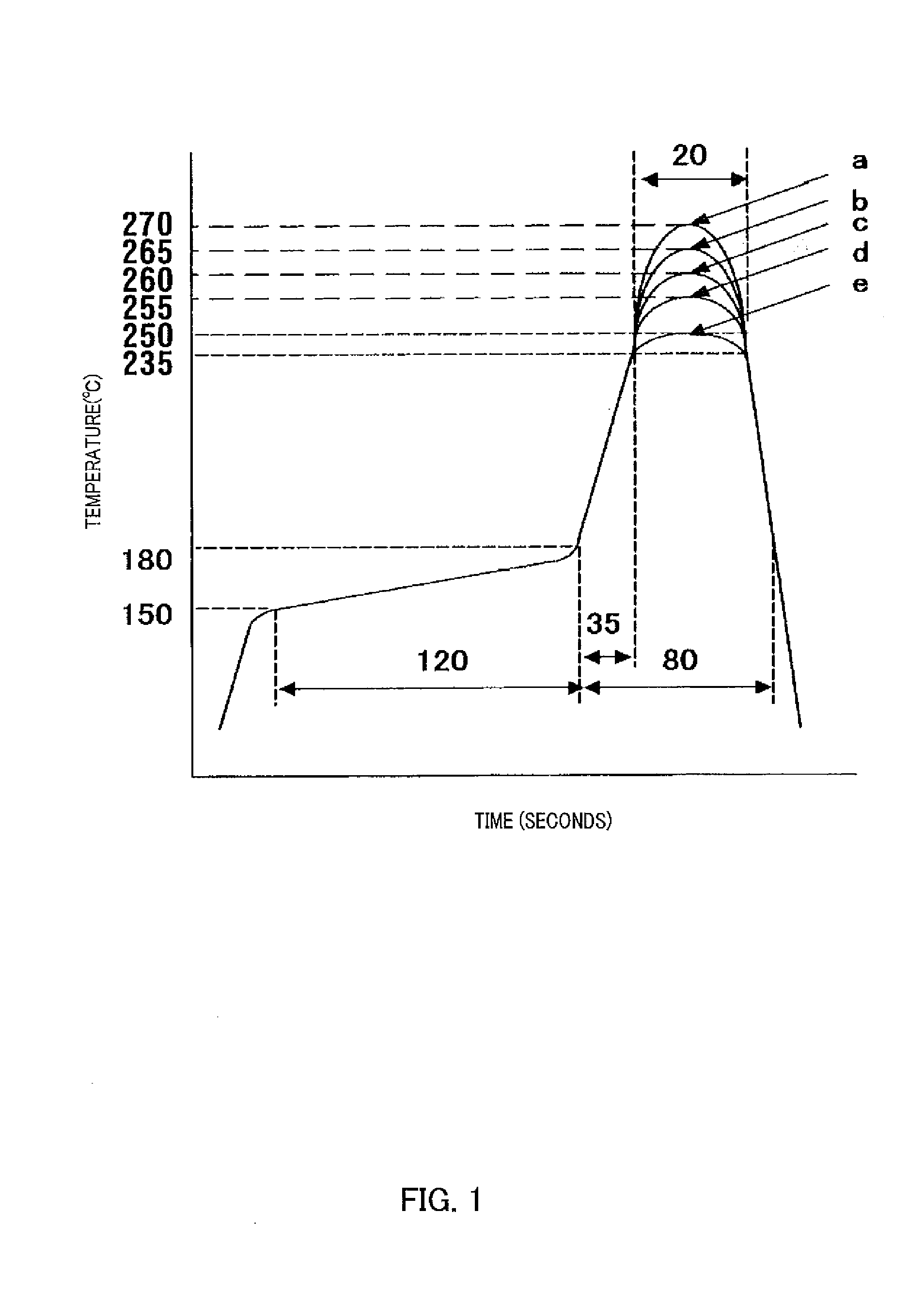Thermoplastic resin composition for reflective material, reflective plate, and light-emitting diode element
a technology of reflective materials and thermoplastic resins, applied in the direction of optical elements, instruments, optics, etc., can solve the problems of reducing reflectance and mechanical strength, roughness tends to significantly affect the appearance of products, and the melt-flowability of reflective materials is low, so as to achieve excellent flowability and moldability, high mechanical strength of molded objects, and excellent heat resistance
- Summary
- Abstract
- Description
- Claims
- Application Information
AI Technical Summary
Benefits of technology
Problems solved by technology
Method used
Image
Examples
example 1
[0222]The above polyester resin (A1), the following inorganic filler (D1, D2), the following white pigment (C), and the above thermoplastic resin (B1) (olefin polymer) were mixed using a tumbler blender at a proportion as shown in Table 2. The obtained mixture as a raw material was melt-kneaded in a twin-screw extruder TEX30α manufactured by Japan Steel Works, Ltd. at a cylinder temperature of 310° C. and then extruded into a strand shape. The strand was cooled in a water tank, drawn by a pelletizer, and cut to thereby obtain a composition in a pellet shape (that is, good compound properties were shown). The results of the evaluation of various physical properties of the obtained polyester resin compositions are also shown in Table 2.
[0223]Inorganic filler (D1): glass fiber: length: 3 mm, aspect ratio: 300 (ECS03-615, a product treated with a silane compound, manufactured by Central Glass Co., Ltd.)
[0224]Inorganic filler (D2): calcium carbonate whisker (length: 25 μm, aspect ratio: ...
examples 2 to 5
, Comparative Examples 1 to 3
[0226]Polyester resin compositions were prepared in the same manner as in Example 1 except that the conditions shown in Table 2 were used. The results are shown in Table 2.
example 6
[0262]The polyester resin (A), the thermoplastic resin (B2) (low molecular weight thermoplastic resin), the white pigment (C), and the inorganic filler (D) were mixed using a tumbler blender in a proportion as shown in Table 3. The obtained mixture was melt-kneaded in a twin-screw extruder TEX30α manufactured by Japan Steel Works, Ltd. at a cylinder temperature of 300° C. and then extruded into a strand shape. The strand was cooled in water in a tank, drawn by a pelletizer, and cut to thereby obtain a composition in a pellet shape. The results of the evaluation of various physical properties of the obtained resin compositions are shown in Table 3.
[0263]Polyester Resin (A)[0264]Composition: dicarboxylic acid component unit (terephthalic acid: 100 mol %), diol component unit (cyclohexanedimethanol: 100 mol %)[0265]Intrinsic viscosity [η]: 0.6 dl / g[0266]Melting point: 290° C.
[0267]Thermoplastic Resin (B2) (Low Molecular Weight Thermoplastic Resin)[0268]A mixture of an ethylene polymer-...
PUM
| Property | Measurement | Unit |
|---|---|---|
| glass transition temperature | aaaaa | aaaaa |
| mol % | aaaaa | aaaaa |
| mol % | aaaaa | aaaaa |
Abstract
Description
Claims
Application Information
 Login to View More
Login to View More - R&D
- Intellectual Property
- Life Sciences
- Materials
- Tech Scout
- Unparalleled Data Quality
- Higher Quality Content
- 60% Fewer Hallucinations
Browse by: Latest US Patents, China's latest patents, Technical Efficacy Thesaurus, Application Domain, Technology Topic, Popular Technical Reports.
© 2025 PatSnap. All rights reserved.Legal|Privacy policy|Modern Slavery Act Transparency Statement|Sitemap|About US| Contact US: help@patsnap.com

